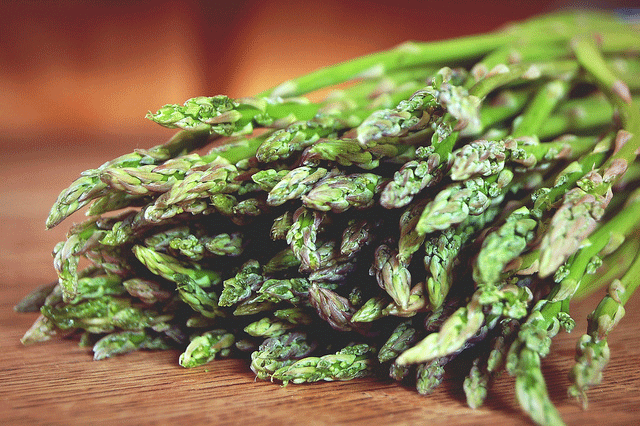Asparagus is a long-lived hardy perennial with fleshy roots and fernlike, feathery foliage. The plant grows about three feet tall, and the part you eat is the tender young stem. It takes patience to establish an asparagus bed, but it’s worth it; once established, it’s there for the duration. Fresh asparagus is a delicacy that commands a devoted following the first asparagus is as welcome to the gourmet as the first crocus is to the gardener.
Where and when to grow
Asparagus grows well in most areas of the United States, with the exception of the Deep South. It likes a climate where the winters are cold enough to freeze the top few inches of soil and provide it with the necessary period of dormancy. Advance planning is essential when you’re starting an asparagus bed, because it’s virtually impossible to move the bed once it’s established. You’ll probably have to order asparagus crowns by mail through a nursery catalog; order early, and plant asparagus four to six weeks before your area’s average date of last frost.
How to plant
Asparagus needs well-drained, soil, with a pH over 6. Full sun is best, but asparagus will tolerate a little shade. When you’re preparing the soil, spade down eight to 10 inches, and dig in one to 1½ pounds per 100 square feet of a complete, well-balanced fertilizer. Asparagus is usually grown from crowns; look for well grown, well-rooted specimens, and be sure they don’t dry out. To plant asparagus crowns, dig out a trench or furrow 10 inches wide and 10 to 12 inches deep, and put in two to four inches of loose soil. Space the crowns in the prepared bed in rows 18 inches apart, leaving 12 to 18 inches between plants. Place the crowns on the soil, with the roots well spread out, and cover with two more inches of soil. As the spears grow, gradually fill in the trench to the top.
Fertilizing and watering
Apply a high-nitrogen (15-10-10) fertilizer after harvesting the spears, at the rate of one pound per 100 square feet or 10 pounds per 1,000 square feet. Detailed information on fertilizing is given in “Spadework: The Essential Soil” in Parti.
It’s important to give asparagus enough water when the spears are forming. The plant is hardy and will survive without extra watering, but the stalks may be stringy and woody if you don’t keep the soil moist.
Special handling
Do not handle the plants when they are wet. Asparagus does not relish competition, especially from grass plants. Weed thoroughly by hand; control weeds conscientiously, or they will lower your yield considerably.
Pests
The asparagus beetle may attack your plants, but should not be a problem except in commercial asparagus-growing areas. If you do encounter this pest, pick it off, or spray with carbaryl. Detailed information on pest control is given in “Keeping Your Garden Healthy” in Parti.
Diseases
Asparagus can develop rust; you can lessen the incidence of disease by opting for a rustresistant variety. Generally, asparagus is a problem-free crop and suitable for the organic gardener. Detailed information on disease prevention is given in “Keeping Your Garden Healthy” in Part 1.
When and how to harvest
Asparagus should not be harvested until it’s three years old; the crowns need time to develop fully. During the third season, cut off the spears at or slightly below soil level. Move a little soil gently aside as you cut the spears so you can see what you’re doing if you cut blind you may damage young spears that have not yet pushed through the surface. Harvest asparagus when the spears are eight to 10 inches tall; if the stalks have started to feather out, it’s too late to eat them. Stop harvesting when the stalks start coming up pencil-thin; if you harvest them all, you’ll kill the plants.
Storing and preserving
The Romans began to dry their asparagus for out-of-season dining as early as 200 B.C. These days, you can store it up to one week in the refrigerator keep it upright in an inch or so of water, as you’d keep flowers. You can also freeze or can It, but it’s best eaten fresh. Detailed Information on storing and preserving is given in Part 3.
Serving suggestions
In the first century the Emperor Augustus told his minions to carry out executions “quicker than you can cook asparagus,” and they knew they’d better get the job done fast. One of the earliest records of asparagus being eaten in America recommends it with “oi l and vinegar,” which is still one of the best ways. Steam asparagus quickly, or cook it upright in a pan, so the stems cook faster than the tender tips. Fresh asparagus adorned with nothing but a little melted butter is superb or try it with creamed chicken on toast or laid on toast and topped with a thin slice of prosciutto and cream sauce. Chive mayonnaise, mustard butter, or a caper butter sauce are all splendid alternative dressings for asparagus.


